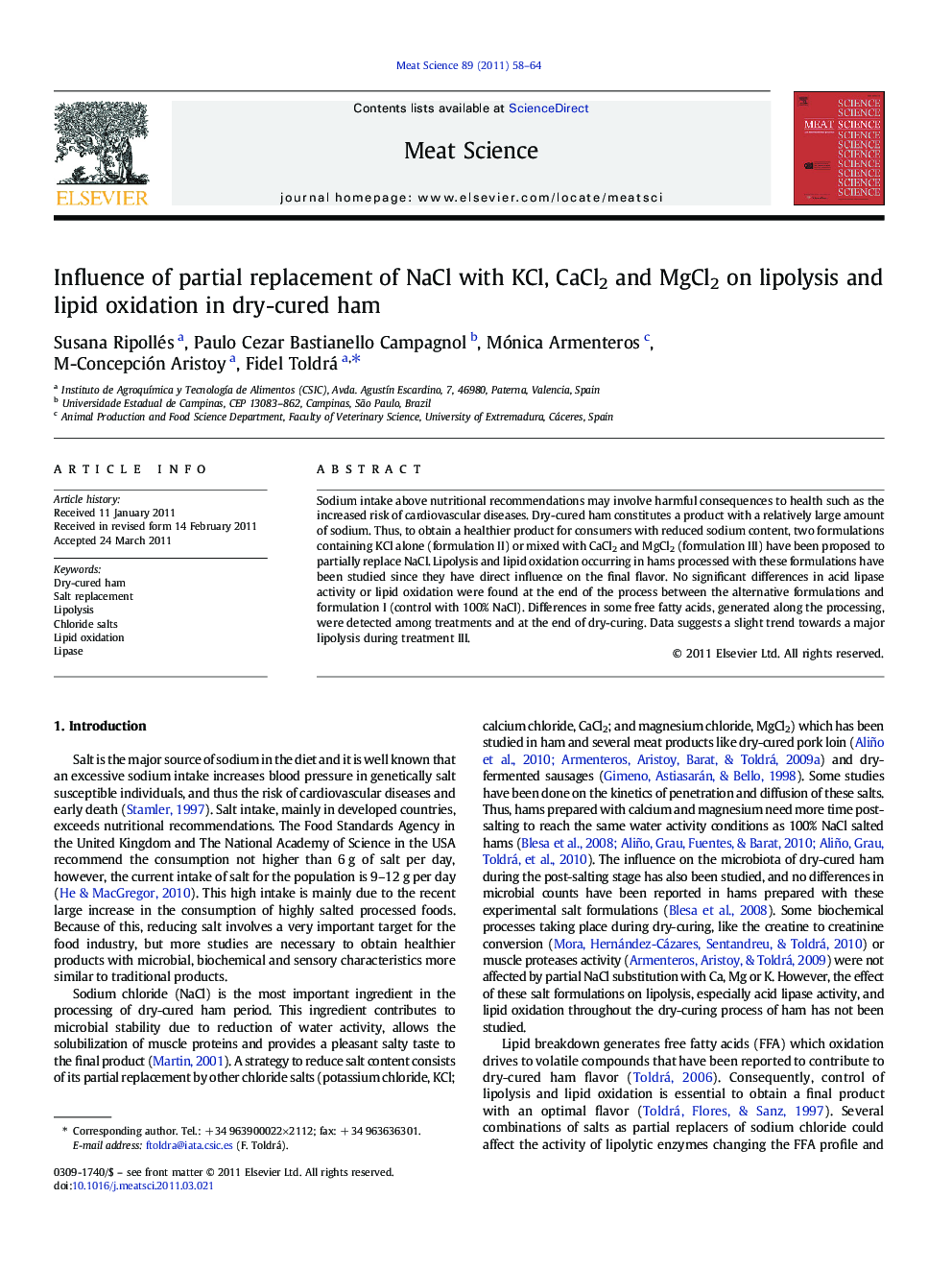| Article ID | Journal | Published Year | Pages | File Type |
|---|---|---|---|---|
| 2450380 | Meat Science | 2011 | 7 Pages |
Sodium intake above nutritional recommendations may involve harmful consequences to health such as the increased risk of cardiovascular diseases. Dry-cured ham constitutes a product with a relatively large amount of sodium. Thus, to obtain a healthier product for consumers with reduced sodium content, two formulations containing KCl alone (formulation II) or mixed with CaCl2 and MgCl2 (formulation III) have been proposed to partially replace NaCl. Lipolysis and lipid oxidation occurring in hams processed with these formulations have been studied since they have direct influence on the final flavor. No significant differences in acid lipase activity or lipid oxidation were found at the end of the process between the alternative formulations and formulation I (control with 100% NaCl). Differences in some free fatty acids, generated along the processing, were detected among treatments and at the end of dry-curing. Data suggests a slight trend towards a major lipolysis during treatment III.
